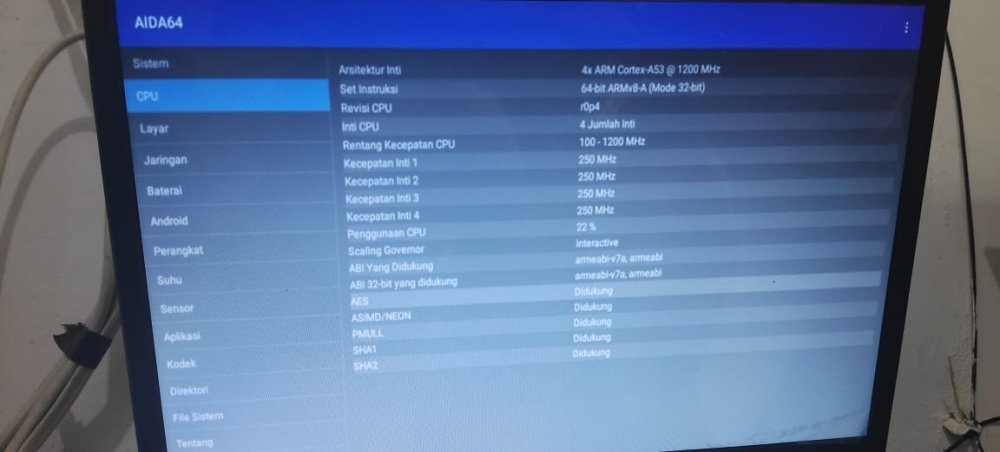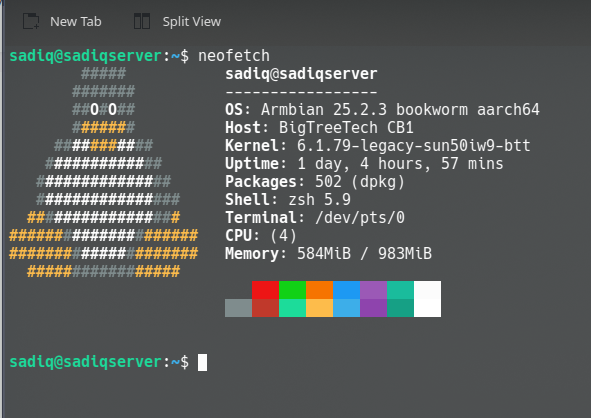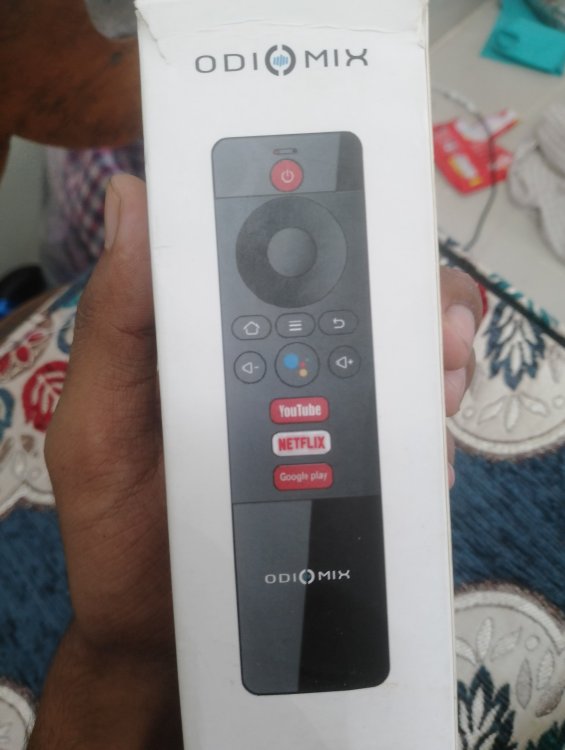Search the Community
Showing results for 'tv'.
-
TV Box Name: OSMC Vero 4k CPU: Amlogic S905X Armbian build file name: Armbian_community_25.5.0-trunk.301_Aml-s9xx-box_bookworm_current_6.12.20_minimal.img Armbian_community_25.5.0-trunk.301_Aml-s9xx-box_bookworm_current_6.12.20_xfce_desktop.img DTB file used: meson-gxl-s905x-vero4k.dtb U-Boot used: u-boot-s905x-s912 Kernel Version: 6.12.20 Distribution Installed: bookworm Working Ethernet: Yes Max Ethernet Speed that works: 100Mbps Does wifi work: No Does bluetooth work: Yes Does HDMI audio work: No Additional Comments (provide any additional information you feel is important): WARNING: RISK OF BRICKING! Only proceed if you know what you're doing and are willing to accept the risk of bricking your device! If your use case doesn't require Armbian or the latest Linux kernel, you may want to try these solutions first: Run `systemctl disable mediacenter` from the OSMC terminal and continue from there Simple X11 desktop: https://discourse.osmc.tv/t/testing-x11-simple-desktop-chromium-web-browser-in-a-simple-installer-for-stretch/16846 Headless arm64 Docker: https://discourse.osmc.tv/t/non-official-headless-arm64-docker-solution-for-vero4k/108666/4 Toothpick method doesn't boot Armbian, because standard u-boot config expects kernel.img and dtb.img to be present in a different file format than Armbian provides. Getting Armbian to boot requires changing the u-boot environment to the one provided by aml_autoscript. This can be done from a working OSMC installation or recovery. The method below ensures you can still boot the original OSMC installation by removing the SD card. Prerequisites: Terminal skills and patience Vero 4k with working OSMC installation (https://osmc.tv/wiki/vero-4k/reinstalling-osmc/) USB keyboard and HDMI monitor attached to Vero High quality micro SD card PC with SD card reader Toothpick or similar (non-conducting) SD card preparation: Download latest image: https://www.armbian.com/amlogic-s9xx-tv-box/ Write image to SD card as described in this post: https://forum.armbian.com/topic/33676-installation-instructions-for-tv-boxes-with-amlogic-cpus/ Let's get dangerous! To change the u-boot configuration on the Vero 4k: Boot Vero into recovery by applying power and holding the (left) shift button. This might take a few tries The device should prompt a tty screen. Login with user osmc and password osmc Run the following commands (these are from the aml_autoscript file in the Armbian /boot partition): IMPORTANT: Make sure these lines are exactly correct, because if not it can mess up the boot process and brick your device! fw_setenv bootcmd 'run start_autoscript; run osmcfromsd; run osmcfromusb; run storeboot' fw_setenv start_autoscript 'if mmcinfo; then run start_mmc_autoscript; fi; if usb start; then run start_usb_autoscript; fi; run start_emmc_autoscript' fw_setenv start_emmc_autoscript 'if fatload mmc 1 1020000 emmc_autoscript; then autoscr 1020000; fi;' fw_setenv start_mmc_autoscript 'if fatload mmc 0 1020000 s905_autoscript; then autoscr 1020000; fi;' fw_setenv start_usb_autoscript 'for usbdev in 0 1 2 3; do if fatload usb ${usbdev} 1020000 s905_autoscript; then autoscr 1020000; fi; done' To verify, run `fw_printenv | grep bootcmd` etc. The fun part: boot into Armbian Power off the device: execute `poweroff` command, wait until device light is red and remove power. Insert the Armbian SD card into the Vero 4k. It should go in upside down and all the way until you hear a slight click sound. Apply power again After some u-boot and kernel logs the device should show the Armbian boot up screen Enjoy Armbian on your Vero 4k! Removing the SD card should boot into OSMC from eMMC again. Many thanks to @SteeMan for helping me with the original troubleshooting here: https://forum.armbian.com/topic/49733-installing-armbian-on-vero-4k-does-not-boot-from-sd-card Hardware video acceleration, HDMI audio and WiFi don't seem to work out of the box, but I can imagine that with some effort it's possible.
-
1
-
I need some help for My TV Boxes / STB That Run Armbian Debian Because The kernel panic every im booting , Any Solution ??
-
Understand. But I also just prove you that it works on Armbian perfectly. Problem is with this TV box device. (probably / hopefully "just" wrong DT settings) The reason that it works on Alex / random OS is randomness, pure luck and just to understand why, someone needs to sponsor (!) days to weeks of his time. Armbian provides you build framework, we maintain and supports this community and many of those device, but there are simply too many of them. Those are resources that will help, we can provide hints and tips, but fixing this "small problem" is up to the one that sold you this device (never) and general Linux community, not necessarily Armbian community, and certainly not Armbian OS maintainers. Once you fix this problem, someone needs to keep those features working on firmware upgrade ... so you have some idea on the scale of operation.
-
i think it is programm problem. I do not have problem with hdmi in standart firmware ( 4k LG TV ) But in the 6.x kernel line i have this problem can you write the step to try do this ? Do you use overlay?
-
Sorry but I can't help any further without this device installed.. we are working blind right now. If it still boots Android then the box should be okay. There's always a risk when modifying a tv box. I haven't broken one yet.
-
@Nick A A forced installation on the TV box? But isn't there a chance of a problem?
-
If you boot with this plugged in? AR9271 is one of the most stable things on USB, but USB hardware / sw stack on weird tv boxes can vary. We are also having it in the auto performance testing case: https://github.com/armbian/armbian.github.io/actions/runs/14167367586
-
@Nick A I tested the image you sent, but it remains a black screen. Does this black screen mean that the TV box is trying to read it, but is unable to do so, or is it something else?
-
@Nick A Is it possible to use those programs to install firmware on these TV boxes to install Linux? Like phoenixusbpro, phoeniscard or phoenixsuit?
-
hi, i wonder if theres any support for the a/v output on my tv box with the rk3229, i installed armbian but only seems to output on the hdmi, i really want to connect it to my tv :3
-

Installing Armbian on Vero 4k, does not boot from SD Card
SteeMan replied to patientgamer's topic in Amlogic CPU Boxes
All of this information is very helpful. Here is what you need to try. Look at the file aml_autoscript in your armbian /boot folder. This is the script that should get run when the reset button is pressed during poweron on a regular amlogic based android tv box. But since you now have access to the uboot console, you can enter these environment commands directly. If you start with the 'setenv bootcmd... and end with the 'saveenv' you will have modified the uboot environment to run armbian from sd or usb first, and then fall back to your other os on emmc. In looking at your current uboot environment, the only command that will be modified from what you have is the 'bootcmd'. In looking at what you have both the armbian and your current bootcmd fall back to run 'storeboot'. But by installing the armbian version you will loose the abiltiy to boot osmc from sd or usb, which you probably don't care about, but I thought I would mention it. -
i have buy cheap tv box tripsky mini q3, i have look on recovery is based a95x_r2 and have this specs : and i search on google for dtb is in here : https://github.com/torvalds/linux/blob/master/arch/arm64/boot/dts/amlogic/meson-gxlx-s905l-p271.dts i don't know how to port this, because i don't have any experience for porting this support, any support on this ?
-

Amlogic s905l board p271 install guide
geraldine adi replied to geraldine adi's topic in Amlogic CPU Boxes
@akabulous did you check your board architecture using AIDA and already make sure your board is p271 with Amlogic S905l ? let me know what are your's tv box model ? -
Good afternoon everybody, I have a minix mini neo 5 box and I wanted to install Armbian for the home assistant. Specifications: 1G Ram and 16 nand chip rk3066. I've already tried with the multitool and I can't start it. Thank you for help
-

Cannot run ARMbian on my tv box (TX10 PRO)
Sadiq Ahmed replied to erebus041's topic in Allwinner CPU Boxes
Hey I have successfully installed armbian on that exact tv box (TX 10 pro) with this image https://www.armbian.com/bigtreetech-cb1/ Just the WIFI does not work. Everything else works fine -
Here's some of the media patches not included in the official armbian build. I tested ffmpeg-v4l2 on my unofficial build and works with only a few frame drops. I'm compiling an image for my TV Box using the official build and these patches. I'll let you know if it works. https://github.com/NickAlilovic/build/tree/v20250306/patch/kernel/archive/warpme-6.12 0553-media-cedrus-Don-t-CPU-map-source-buffers.patch 0554-media-Add-NV12-and-P010-AFBC-compressed-formats.patch 0555-media-cedrus-add-format-filtering-based-on-depth-and.patch 0556-media-cedrus-Implement-AFBC-YUV420-formats-for-H265.patch
-
I was adding my Transpeed TV Box patches to official Armbian using kernel 6.12.16. I got this error compiling my dts at this line. &ahub_dam_mach { status = "okay"; }; I found this was missing in the sun50i-h616.dtsi. ahub_dam_mach:ahub_dam_mach { compatible = "allwinner,sunxi-snd-mach"; soundcard-mach,name = "ahubdam"; status = "disabled"; soundcard-mach,cpu { sound-dai = <&ahub_dam_plat>; }; soundcard-mach,codec { }; };
-
In my H96 TV box I have been running Armbian for over an year. Works great. Today I did a fresh install of: Armbian_community_25.5.0-trunk.256_Rk3318-box_bookworm_current_6.12.19_minimal.img.xz uname -a shows: rk3318-box> uname -a Linux rk3318-box 6.12.19-current-rockchip64 #2 SMP PREEMPT Thu Mar 13 12:02:20 UTC 2025 aarch64 GNU/Linux It is my understanding that Linux 6.12+ kernel already have all the real-time patches in the mainline kernel sources. All one needs to do is to 1. rebuild the kernel after configuring for FULL PREEMPT-RT support or (if kernel already built with this configured) 1a. reboot after providing to 'grub' a boot option "preempt=full" If any one has had experience running the full PREEMPT-RT kernel on rk3318 (or any Armbian box)? What are the best steps to get and natively build a new kernel for 6.12.19 on my rk3318 box (only show 27 Gb free though, may not be enough.)
- 1 reply
-
1
-
Hello Recently I bought this Odiomix branded tv stick but it's a generic tv stick. I saw it branded in many ways. https://www.aliexpress.com/item/1005006399158895.html https://evaly.com.bd/products/odiomix-s96-4k-ultra-hd-1080p-full-hd-android-tv-box-2488727 It has 2 GB RAM (probably LPDDR3) and 16 GB Toshiba EMMC. Dual band wifi and Bluetooth 4.0 (LB-LINK-BL-M8800DS1 module) https://m.made-in-china.com/product/LB-LINK-BL-M8800DS1-1T1R-802-11a-b-g-n-ac-ax-WIFI6-BT5-0-USB-Module-with-CE-FCC-2074966505.html Is there any possibility of running Armbian?
-
I don't know if this is trolling or not. Let's assume it is not and the question is genuine. There is no hate against cheap chinese tv boxes, but there are many objective problems: no support: hell yeah, you can't say anything against this, at most you get the original firmware from the vendor, expect nothing more varying hardware quality: plenty of stories of hardware failing after few weeks/months. Lucky you your hundreds worked so far (I wonder what do you do to sell hundreds of those...) varying hardware in general: pain and suffer to support; you should at least say thank you to people here around that spend their time (that will not come back) to let you have a cheap tv boxes working with free and open source software (not to mention those who sell them...) no documentation: it means, mostly, that it takes huge amount of time and advanced skills to reverse engineer the thingies. Time is the fundament of a salary, skills are the multiplication factor of a salary. People here - all the people, starting from the heads of Armbian project down to the forum user answering to posts - give both for free, but no salary for us, despite the passionate efforts.
-
Hi I’m thinking of buying a more powerful TV box, and I see that everyone recommends Rockchip. However, when I look at performance, I notice that the S905X3 has much more power than an RK3566 and is also cheaper. There are comments that development for Amlogic is stalled, but new versions continue to be released from what I can see. I only want it for setting up a Pi-hole and some Dockerized applications. Am I making a mistake if I go for an S905X3? Currently, I have an S905X, and although it was a bit challenging, it’s working quite well
-
I purchased this fake clone TV box of the classic Tanix TX3 Mini 2GB Ram 16GB Rom for around 20 dollars (including shipping). I discovered that the soc is S905L2-B and before bricking the card with attempts to install it on eMMC I wanted to know if anyone of you found a firmware for this TV box compatible with the Amlogic USB Burning tool. On the internet I only found two tx boxes that mount the S905L2 soc and they are the X7 5G and ipbs9505 and I couldn't find firmware to try to load them on my tv box, it's difficult on the Chinese forums for me to be able to find the downloads. Any advice is welcome because with boot from the SD and the armbian-ddbr command I get an image but which I can only restore with the same command after booting from the SD so if the TV box is bricked and I can't boot this path won't work. I can use it to restore the Android factory image
-
Hi there. First time posting. I already installed the latest version of the desktop version for my M1 and I was gratefully surprised how an old device is still working thanks to the armbian community. Thanks all of you. I am on a retro project trying to make my M1 working on an old crt TV through the pal/ntsc video output. New compiled kernel doesn’t seem to have the necessary driver/module. Any workarounds/ideas to achieve that? thanks
-

Help with Installing Armbian on RK3328 TV Box (dnetSmart-YSE)
SteeMan replied to Alex M's topic in Rockchip CPU Boxes
The appropriate place for this question is in the existing thread for rk3328 tv boxes:





.thumb.jpeg.f0b3c175f4fe7a35ab47277a35e19015.jpeg)










